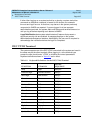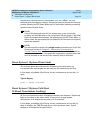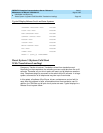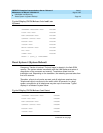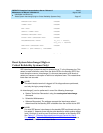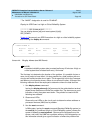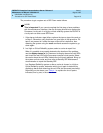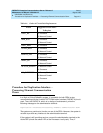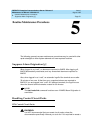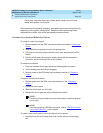
DEFINITY Enterprise Communications Server Release 6
Maintenance for R6vs/si
555-230-127
Issue 1
August 1997
Initialization and Recovery
Page 4-7Reset System Interchange (High or Critical Reliability Systems Only)
4
Reset System Interchange (High or
Critical Reliability Systems Only)
SPE-interchange (system hot start) is denoted by an "i" in the initcauses log. This
restart is used to transfer control from the Active SPE to the Standby SPE in the
least disruptive manner. Interchange (i) is the most transparent of all levels of
restart and causes no disruption of service to telephone users. This restart takes
fewer than two seconds.
NOTE:
The administration terminal is logged off. No diagnostics are performed,
and only the login prompt displays.
An interchange (i) can be performed in one of the following three ways:
a. System Technician-Demanded: using the reset system interchange
command
b. Scheduled Maintenance
c. Software-Requested: The software requests the interchange when it
determines that the Standby SPE is healthier than the current Active SPE
NOTE:
For most SPE alarms, interchange to the standby SPE is achieved using the
hot restart (i). However, there may be other alarms for which another restart
level (1 through 4) must be used to achieve a transition to the Standby SPE.
See Table 6-1
, “Software-Requested Interchanges Caused by Alarm
Conditions” in Chapter 6, ‘‘Reliability Systems: A Maintenance Aid’’, for a
complete list of alarms and restart levels.
EXECEPTION TEST PASSED
TIMER TEST PASSED
MTP TEST PASSED
SANITY TIMER TEST PASSED
ADDRESS MATCHER TEST PASSED
FLASH TEXT CHECKSUM TEST PASSED
DECOMPRESSING IDATA in_cnt = 455532,
out_cnt = 1802240
RAM DATA CHECKSUM TEST PASSED
RESET 5 (EXT REBOOT ) PEFORMED
Continued on next page



